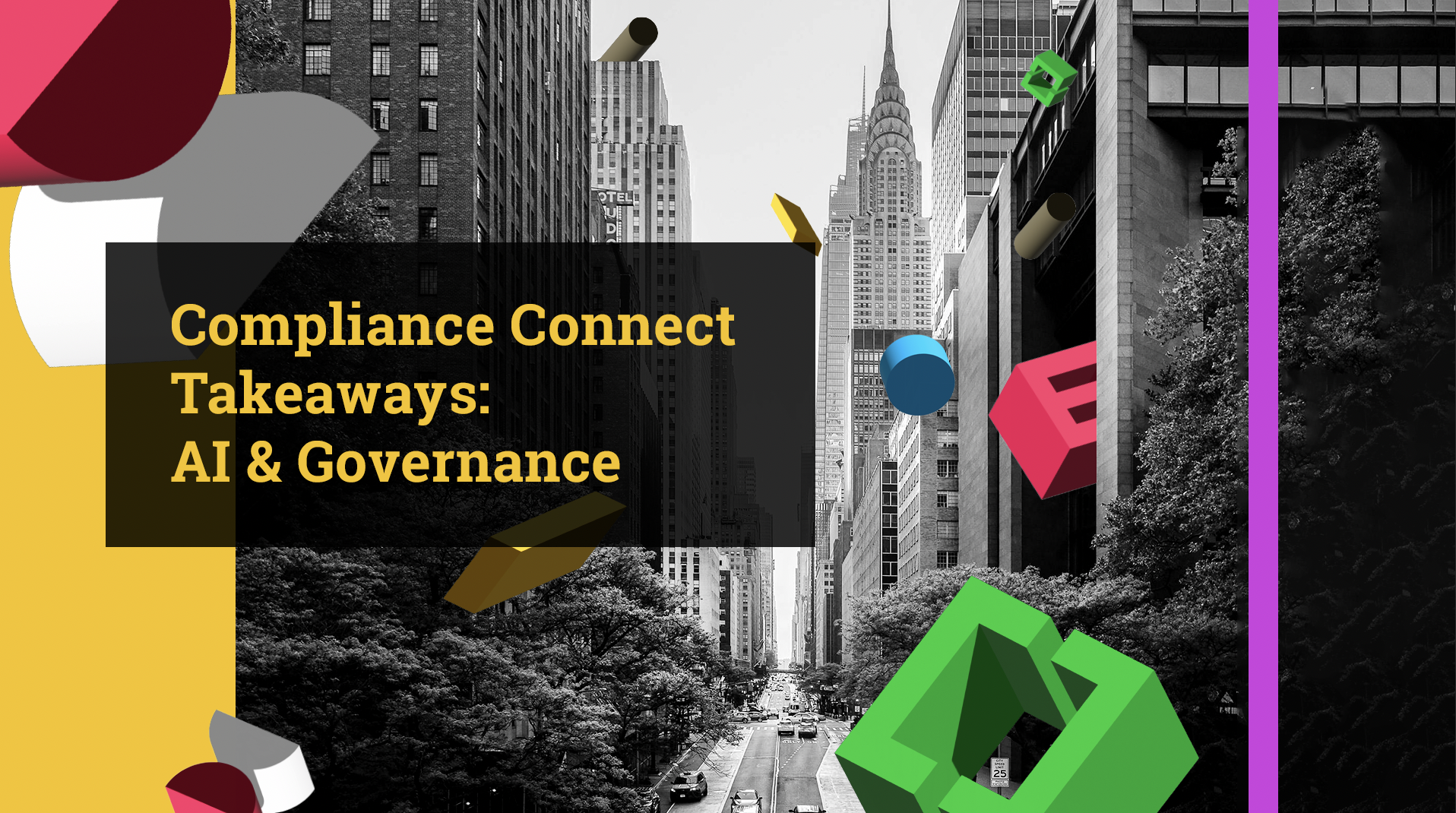"Always deliver more than expected," Larry Page, the co-founder of Google, once famously said. And, as we approach the end of year, it's as good a time as any to reflect on the power of community. So, if we go by Larry’s mantra, what should you expect of Community and what does more than than expected look like?
Community comes in many forms, it could be your workforce, the wider industry, a portfolio of companies, a group of clients, various stakeholders or a syndicate of influencers. Within financial services there are many, many challenges that could be better served through the power of community. A consensus that would benefit the industry as a whole, take away the need for internal cottage industries formed to solve the same problems over and over again. But that means coming together with a common goal at the outset and this has proven harder to orchestrate than it might first seem.
Making collaboration an easier win
So why isn’t the power of the collective a go-to answer for compliance? There are, after all, many problems common to financial institutions across countries, regions, the globe, that might perhaps be better solved by the collective. However, the truth is, just because we can see it would be a good idea, it doesn’t mean that institutions will galvanise together to solve it. When it does happen, it typically has a clear driving force - a new regulation, a public admonishment, a monetary lever are some classic examples.
Our industry is littered with well-intentioned initiatives that were set up by a few and a few that were set up by many. They all certainly set out to bring the industry together to solve something together but the success quotient is low. Data standards are a great example of initiatives that most in the industry would agree are a good idea. There’s such a great business case for them but wins, such as LEIs, are few and far between. Most pushes for data standards have been going a while and those initiatives look to be settled in for the long haul. Many will simply peter out even though the business case remains.
Collectives such as industry utilities also have a potted history. Compliance is a classic area where utilities have been floated with mixed success. In fact, in KYC, it had gotten to the point at one stage where there was a lot of chatter about who was going to create the utility to manage the utilities…can you imagine!
Many utilities are set up by single entities or a few institutions of a similar shape and size - there are both recent and old examples of utilities that have been started with the support of large global financial institutions. At first glance, having well-known names is an eye-catching industry initiative but they have struggled, time and again, to build a utility that truly serves the whole industry from investment banks to asset managers, hedge funds, sovereign wealth funds, pension and insurance companies. Without fair industry representation of all sectors and all shapes and sizes, starting with a single homogenous type of organisation has almost added an extra hump to the already drawn out uphill battle to get broad adoption.
Make no mistake, we absolutely believe in the need and effectiveness of utilities. There are clear examples where utilities have worked, SWIFT is a great example. Establishing an industry utility is no small lift and you need critical mass, that’s really massive industry buy-in, to make them viable. SWIFT was set up in 1973 and they started with 239 banks across 15 countries. That's a lot of impetus. That’s a lot of industry commitment. That was a disruption. They were solving a common problem: how to communicate across cross-border payments. And to push through to a successful conclusion, massive numbers in the industry put their shoulder behind it from the get-go.
But there are probably more utilities that fail to become true industry utilities. Instead they become a utility-of-sorts to a few. Utilities need industry buy-in from the outset, they need to be a good solution for the many, not the few who started it. They truly have to be for the greater good to work. And, as already mentioned, they take a long time to build, to get consensus and get going.
So if a utility isn’t right for certain industry problems what else is on the table?
How many makes a community?
In some cases, the apparent need for a utility is gazumped by an already thriving community. This is because the industry has effectively already chosen its go-to industry solution by making it the dominant player. Of course, a dominant vendor doesn’t necessarily mean you get a thriving, engaged community but, for the purposes of this conversation around community, collaboration, collective, we are talking about those that do have that.
There are some key elements to a thriving, engaged community. A strong community has that purpose, That single common goal. In compliance, in the case of shareholding disclosure (or beneficial ownership) it would be taking complex, ever changing regulations that are open to various degrees of interpretation and creating a critical mass consensus of what good looks like.
Building a community is not as easy as you might first think. Simply having it on your Wishlist isn’t enough. Communities don’t just happen. Just putting people or institutions together, does not a community make. That common purpose brings people together but everyone needs a voice, a role, skin in the game. It takes hard work, commitment to the process, belief in the community model.
What proof of value?
A strong and diverse community is proven in business to deliver tangible business results. It leads to more innovation - heads together and all that good stuff. A homogenous community stifles innovation and typically takes a more standardised approach to problem solving. It makes your own team more productive - you don’t have to write your own rules, get them validated by Legal, keep reinventing the wheel. You are also getting value by tapping into a much bigger and broader talent pool. You get to benefit from the experience of many, many more institutions and people. A diverse community where everyone has an equal voice also means you don’t have that dominant player, you don’t fall foul of the biggest, boldest or loudest having the dominant voice.
How do I know I’ve joined the best gang possible?
So, now you’re sold or at least listening to the benefits of community, how do you know you’ve joined the right community for you? A strong and diverse community enables any challenges, questions or ambiguities to be considered through a variety of lenses. What might work for one might not be ideal for another, but a consensus can be found. And, importantly in the case of compliance communities, that consensus holds value with the regulators.
For compliance communities, how to interpret a rule or regulation can be debated, different experiences can be brought to bear. And this is another example of where having firms of all shapes and sizes adds value. Each has a valid, and often different or very similar perspective. Our community for shareholding disclosure here at FundApps is made up of those big investment banks, sovereign wealth funds, large asset managers and hedge funds, pension funds, insurance companies through to the boutiques and newbies. All are required to be compliant, all need to be able to prove it. Regulations are rarely explicit throughout. Regulators like to create regulations which are open to interpretation, that they can nuance and update. Having that consensus around how a regulation is interpreted, having it baked in and the community consensus around it, that brings peace of mind.
And the power of the community means that, if everyone is following the same interpretation, those pesky regulators will have confidence and the firms in the community can get on with their main job. They can step away from the building of the rules, powering it through an engine, make sure they are looking at it through all sorts of angles and lenses, are using the right data and, if they are in doubt or need help in determining if their thinking works - they have a community ready to help. Everyone is held accountable for their part. A consensus is reached and baked into how everyone moves forward.
If regulations change or new ones are added, the solution adapts too. It is nimble and is on the lookout for the community, it keeps working to make sure the community is covered both for the now and also for the future.
That is key to how a community works effectively; diversity of players, people taking part, everyone has skin in the game, there is continuous engagement, people are active and closing the loop on discussions. Everyone has a voice. Competing priorities are taken into consideration. A wide range of capabilities are baked into solutions - not everyone needs everything all at once but they might one day. Priorities change, strategies change, regulations change. The community-led solution has your back. It is in it for the long haul.
Client community is something we know something about. Our client community is both varied and connected. It engages regularly around regulatory nuances both online and in person. They meet up with us, in user groups, they sit on advisory boards, they have client conferences and they comment in portals. They just connect and communicate in whatever safe space suits them at that time. Our clients operate as a community and it is an important part of our value proposition. It is proven to add value and is well-established. And that is the X factor, the secret sauce to delivering more than what's expected. Because the community never rests, it keeps moving forward.
FundApps has had a community model for Shareholding Disclosure since inception. It is now made up of 127 clients, it is global across 18 countries and covers over 100 jurisdictions. The whole community uses the same rules. Diversity is baked in with hedge funds, asset managers, investment banks, pension funds, sovereign wealth funds, family offices all taking part. It serves the small to the large including five of the ten largest hedge funds, three of the ten largest pension funds and some big investment banks. It continues to grow and adapt.
This means they have competing priorities, care to different degrees about different capabilities, and basically have different agendas. Sure being compliant runs through the core but they look at that through very different lenses and their voice is heard. The community only grows and gets stronger.
Is it a happy community? Well, our Net Promoter Score puts us in the upper quartile of happiness and our CSAT score hangs out in the same place. And our clients stick around - we have a 99% client retention rate.
Nominate yourself, nominate someone else. Just do it.
To quote Andrew Patrick White our CEO, “History has shown that strong, diverse communities beat consortiums" hands down.” Have we, at FundApps, managed to create such a community? We believe we have. We embrace the strength and diversity of our community and are here to serve it for now and the future. Bring on the X Factor!



